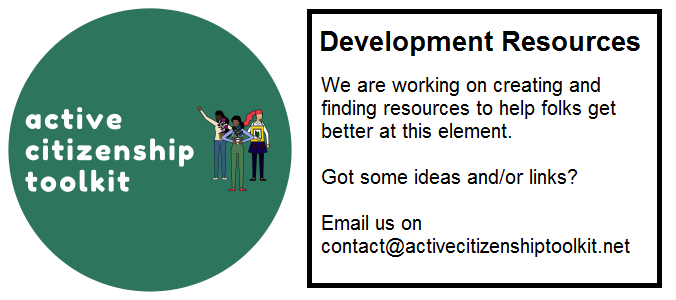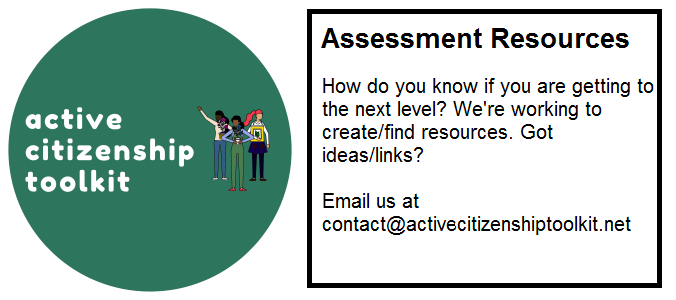Element Descriptor
International climate policy has been a three and a half decade (and counting) shitshow. Understanding the narrative of it, the players , their motives and tactics, makes it easier to understand – if not accept – the seemingly inevitable doom of our species, and others. Not understanding it probably just adds to already horrific levels of stress.
Level descriptors
| Novice | Practitioner | Expert | Ninja |
|---|---|---|---|
| You can outline the basics of the whole sorry shemozzle from 1988 to the Rio Summit, Kyoto, Copenhagen, Paris. You know that 30 years of talk have given higher than ever emissions, higher than ever concentrations and that with COP26 the clue is in the … number. | You can go into detail about where the Paris Agreement comes from, why it is a busted flush already and the usual swings roundabouts and stupidities of the COPs. You know your adaptation from your mitigation from loss and damage, and the bewildering acronyms that get bandied about. And for what, really? | You can recite various bits of the Treaty, protocol, agreements etc. You know how they came to be, how they came to mean nothing, and how the cycle of hope, hype and disappointment keeps repeating. You don’t get invited to many parties. | Various NGOs and delegations have you on speed dial, because you know where all the commas are, what they signify. You have an encyclopedic knowledge of the players, their histories, their tactics, and the futility of it all…# |
Element Overview Essay
This is a draft. If something doesn’t make sense, or you see typos, or if you have further ideas, please email us on contact@activecitizenshiptoolkit.net
Scientists have been aware that carbon dioxide was building up in the atmosphere since the late 1950s. With accurate scientific measurements, they’ve been aware of it as a project. problem before that. Although one or two scientists were particularly concerned, at least in the early decades, it was a “Let’s wait and see what unfolds” approach.
By the mid-1970s, however, there was a consensus forming that co2 was going to be a major problem that one of the first impacts would be sea level rise.
In the early mid 80s, there were efforts including by Al Gore, to get Congress and the Senate in the United States interested and there were similar rumblings and awarenesses in places like Germany, Australia and the United Kingdom.
The key point is this. In the mid-80s, the ozone hole became a cause celebre, “a thing” as the young people used to say. And atmospheric scientists had huge credibility and kudos. An ozone treaty was agreed in Vienna in 1985. And the United States government was not happy that scientists were – as they perceived it – dictating international policy. So when carbon dioxide was next in the firing line, at the Villach meeting of the UNEP and WMO, George Shultz who was then Secretary of State for the basically senile Reagan, wanted to make sure that history did not repeat, and the United States was not bounced into a treaty on carbon dioxide as they had been on ozone, again, his perception.
So there was an attempt by scientists to repeat the trick. It didn’t work. In 1988, the Intergovernmental Panel on Climate Change was created, and the word governmental is crucial here. This is not “International.” This is about governments being able to keep an eye on what’s going on. And to make sure that the summary for policymakers declarations are always hedged, hedged, hedged… (The attacks on the actual science reports, assessment reports nd Working Groups- that was left to the oil companies and outriders.)
In the summer of 1988, climate change exploded onto the public policy agenda and public awareness, partly because there was a very severe drought in the American Midwest and the Mississippi River was at its lowest point, and there was an enormous heatwave. And policy entrepreneurs managed to play a blinder. James Hansen’s testimony on the 23rd of June is seen as a turning point So what happened then was that people like George Bush Senior who was then running to be president, having been Vice President for eight years, and Margaret Thatcher started giving big public speeches, promising something would be done.
Now, it took about a year until sort of middle of 1989 for the fight back by the oil companies and the automobile manufacturers and the coal companies, and the manufacturers in general, and the people who just didn’t like the idea of environmentalism of limits, to fight back, but they did. So you could argue that the founding of the Global Climate Coalition, a front group for industry groups, marks the beginning of that fight back Obviously there are finer details which we won’t go into.
So, in 1990, the first assessment report of the Intergovernmental Panel on Climate Change was released. You also had the Second World Climate Change Conference in November that year. And then the delayed negotiations for an international treaty about climate change only began in January of 1991. And nothing much happened until close to the end of the negotiating period. There were a series of international meetings. And then it came down to a very important standoff.
But let’s first talk about the position of the “developing world” countries. They said, “We did not cause this problem because we didn’t burn enormous amounts of oil, coal and gas. We are not industrial. We are going to suffer the consequences for it in terms of sea level rise, heatwaves, changes to agriculture, etc. It is on you guys who caused this problem to do something about it.”
You can imagine that the Australians in the British and the French and Americans were not best pleased, ot enthused.
But the real standoff, then about a treaty came between the Americans and the French. And the French I suspect were happy with taking a bold stand on climate because they had lots of nuclear power and could be seen to be “low carbon” the basic dilemma was this.
The French said, “Well, this is a serious issue. So the treaty that we all sign in RIo, in June of 1992 has to have targets and timetables for emissions reductions by countries, industrial countries.”
The Americans were like, “We didn’t just win the Cold War, to be tied down by international agreements. And if you keep targets and timetables in the treaty, we ain’t coming to Rio, and we ain’t signing your treaty. And your precious treaty will languish useless. Like the International Law of the Sea which has been languishing for a decade.”
So it was a staring contest.
And the French blinked. And that means that ever since 1992 when the United Nations Framework Convention on Climate Change was signed, and then ratified by individual nations, that the basic problem of who is going to reduce emissions by how much by when has gone on, and on and on.
You have the Berlin Mandate, you have the Kyoto Protocol, you have to Montreal process, you have the Bali Roadmap, you have the Copenhagen agreement, you have the Paris Agreement. None of them has been able to overcome the fact that back in 1992, the French blinked.
Meanwhile, the poor countries are still screwed. But of course, one of those big poor countries, China has become the world’s biggest emitter of carbon dioxide in absolute terms, and per capita is moving up.
Meanwhile we are still deluding ourselves with technological fantasies.
Meanwhile, emissions of greenhouse gases from human activity have gone UP sharply, rather than down.
So that was not a “short explanation” of the International framework. But it’s a hidden history. It’s a forgotten history, because many of the people now running around with shiny faces producing shiny reports were three years old when Rio was signed, and we never taught this stuff. And anyway, they are reluctant to talk about naked political power because they’re technocrats, and they get nervous when they have to talk about the facts of life.
Development Resources

Assessment Resources

